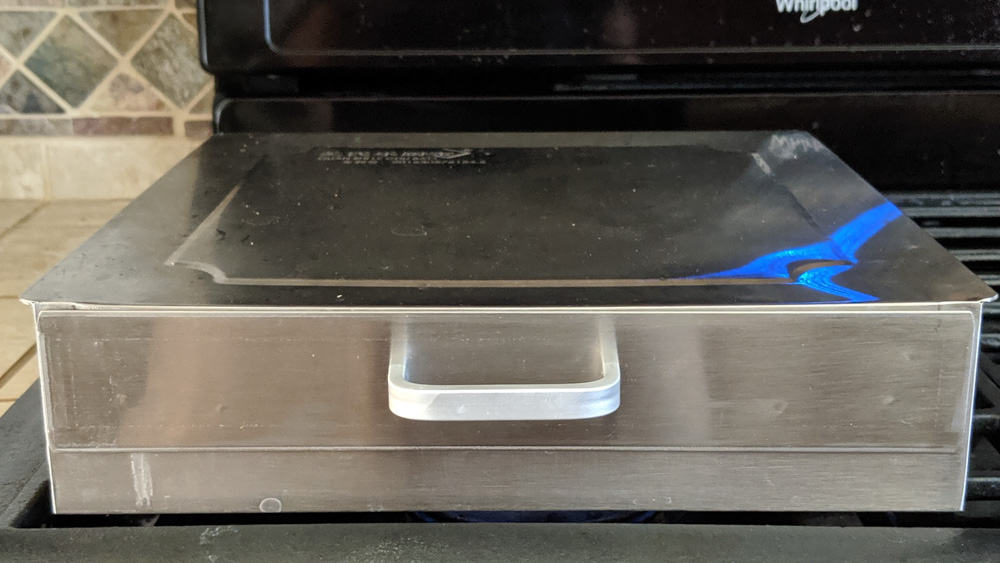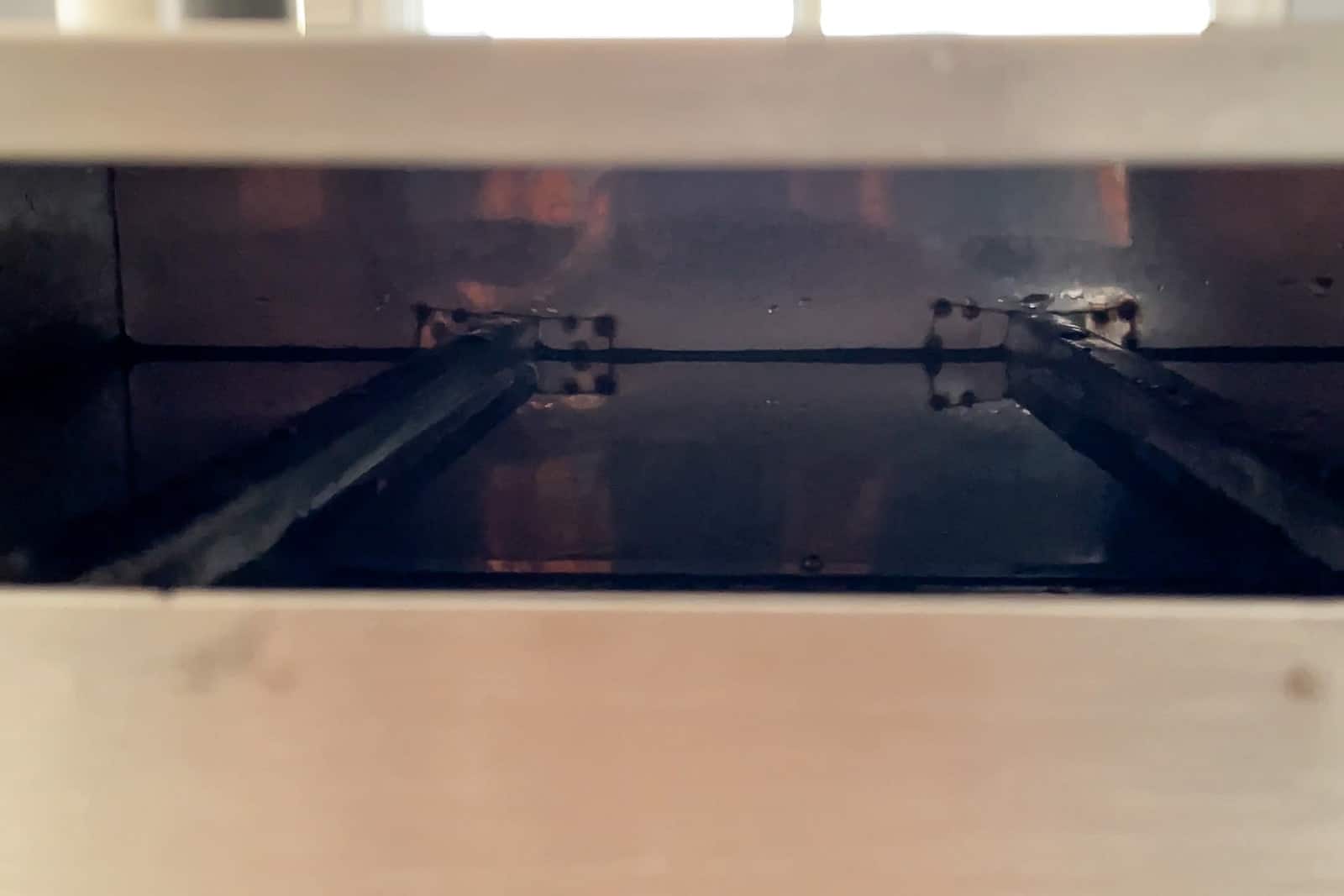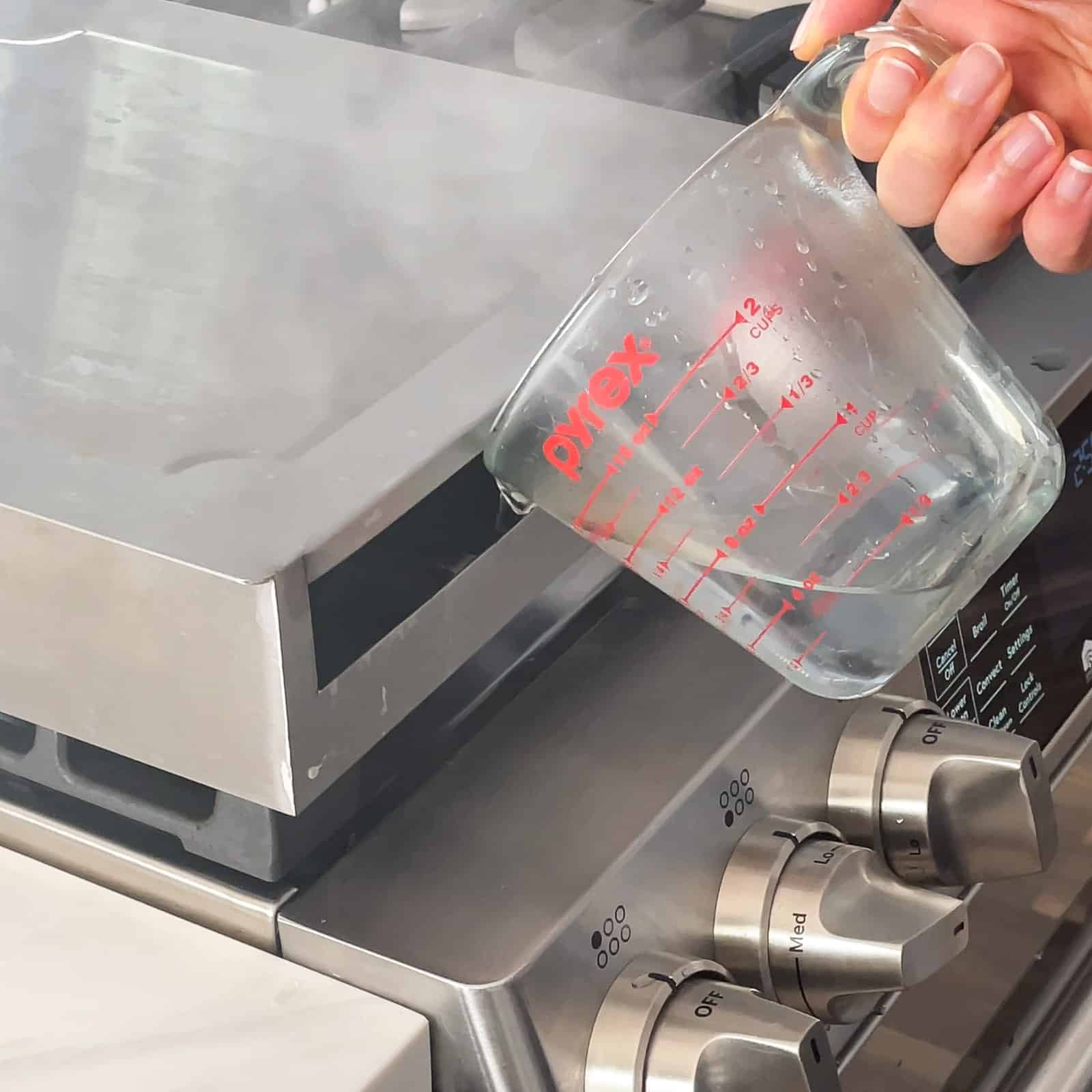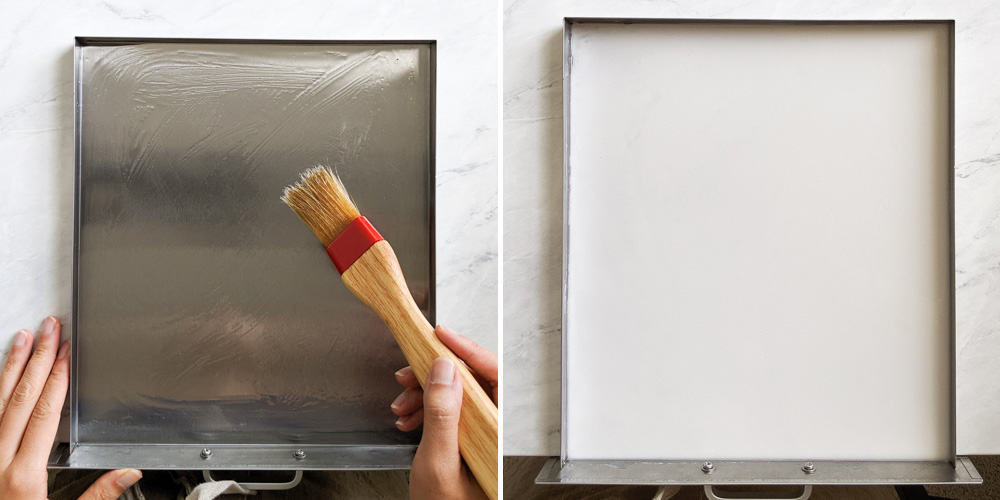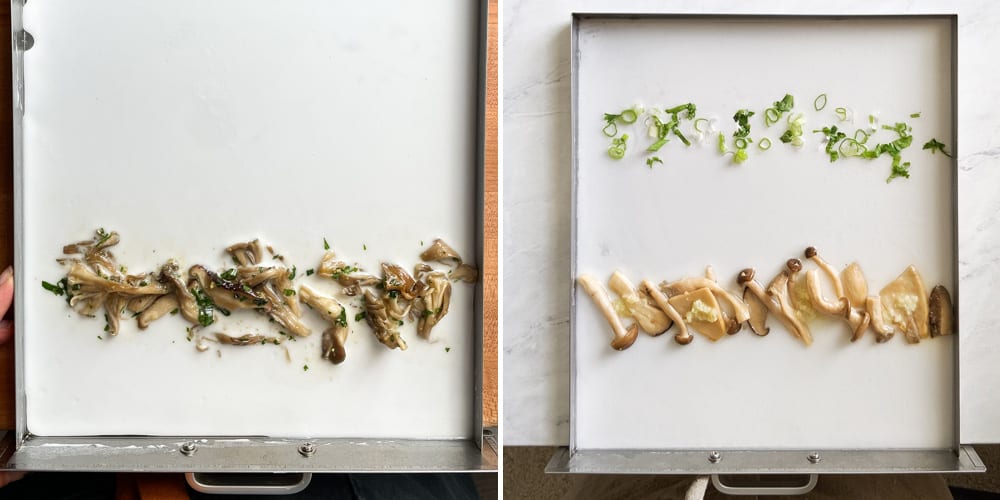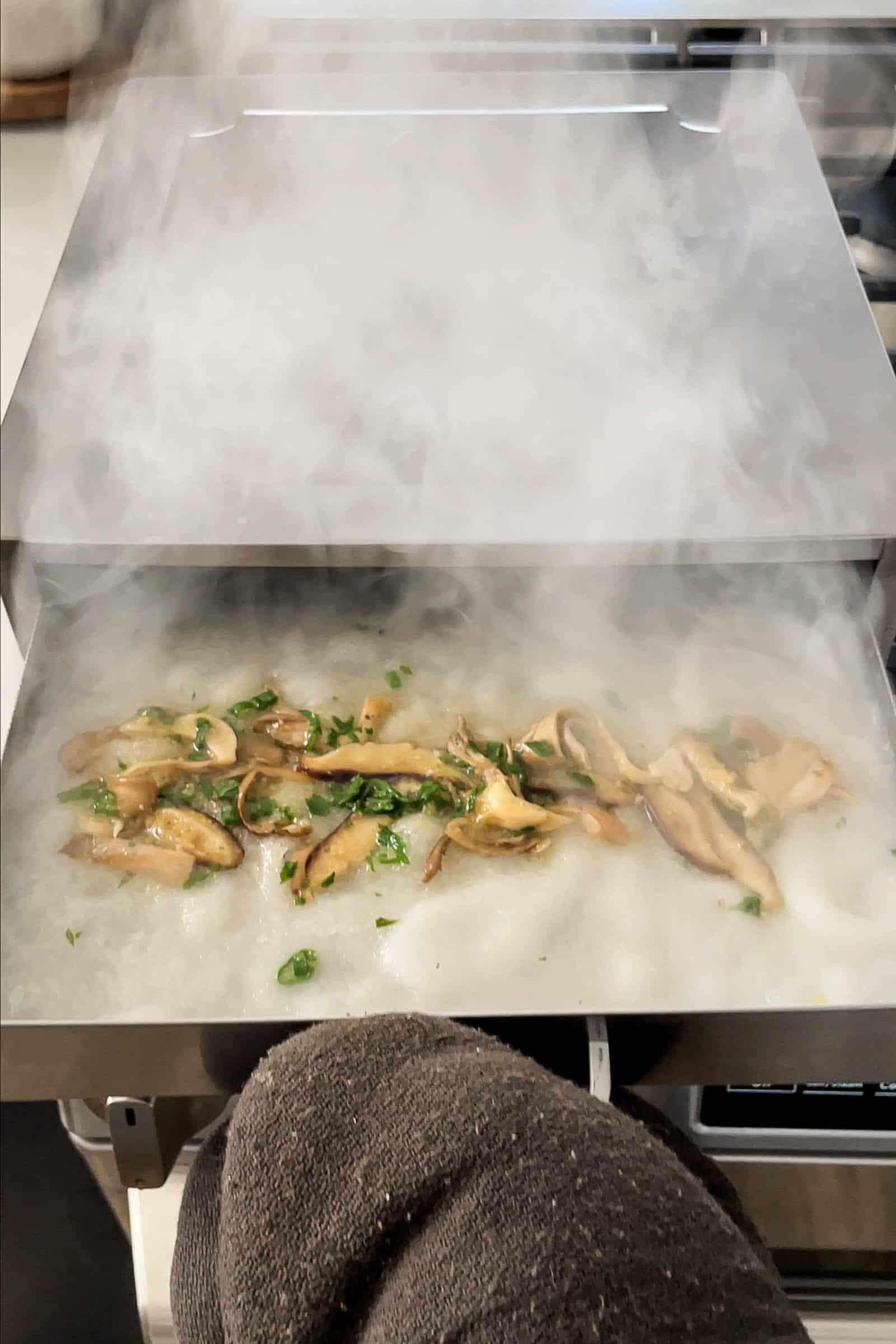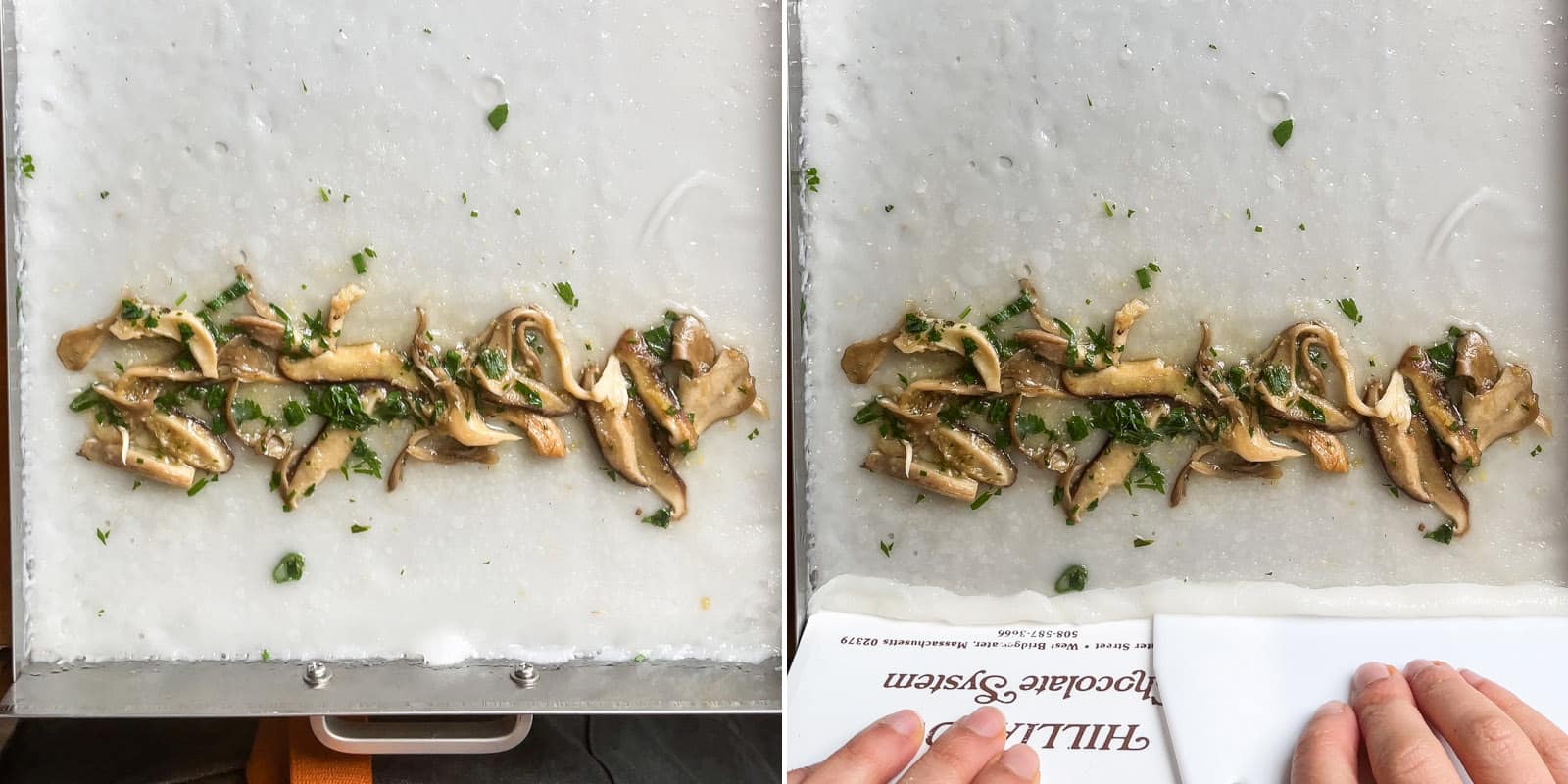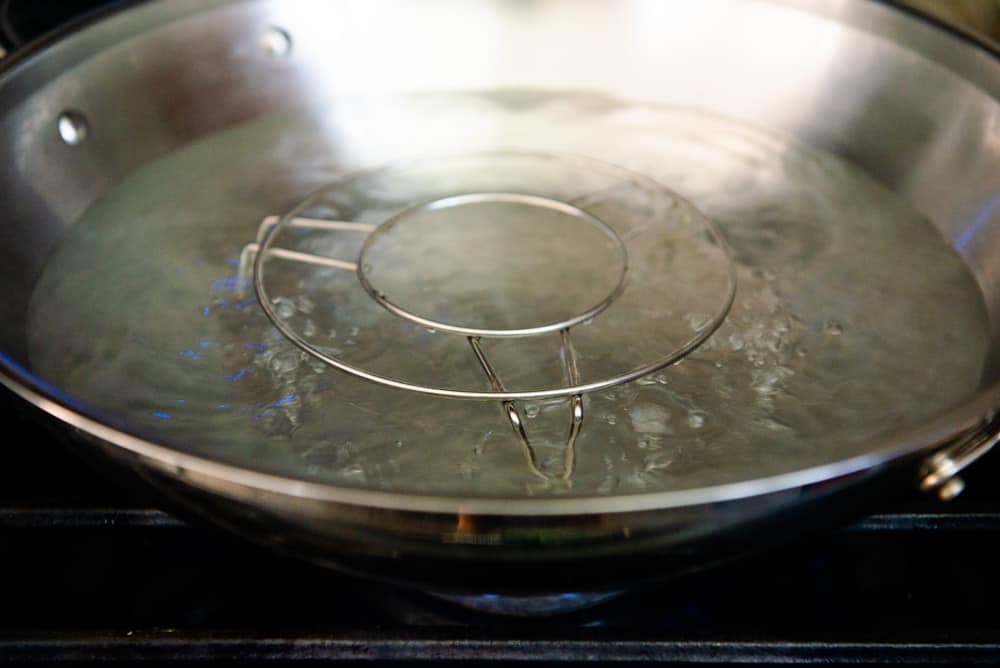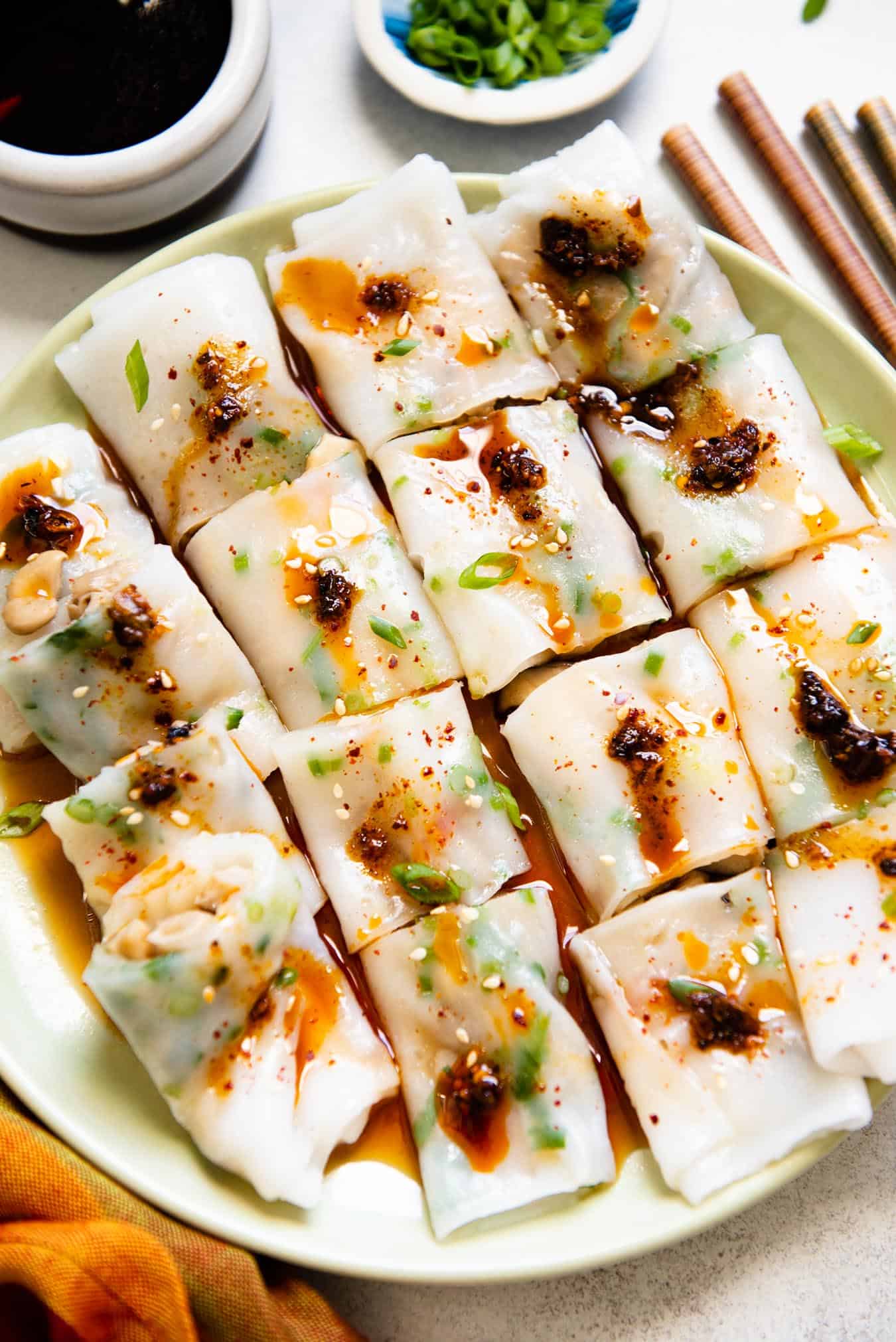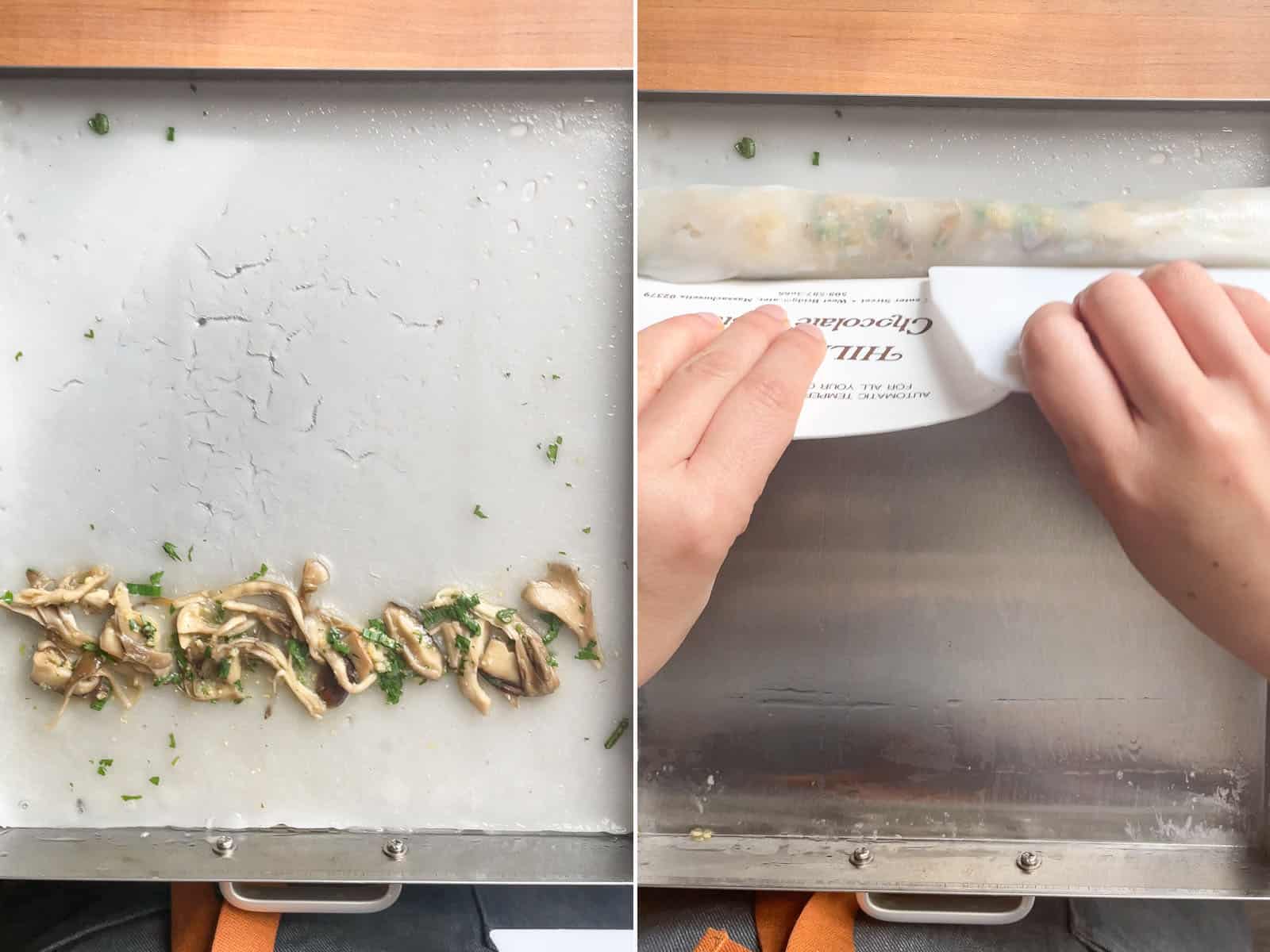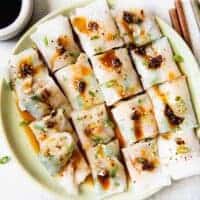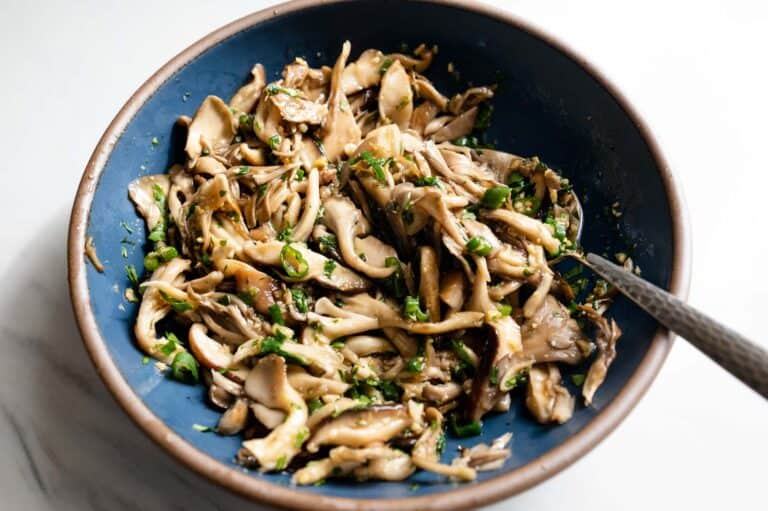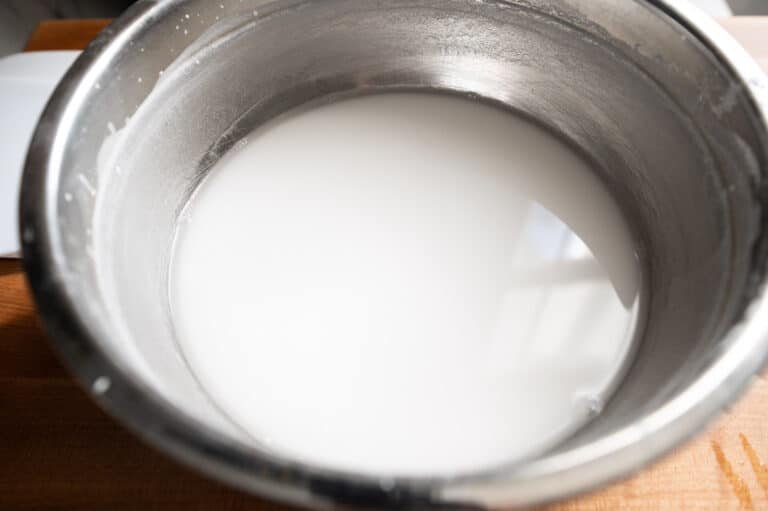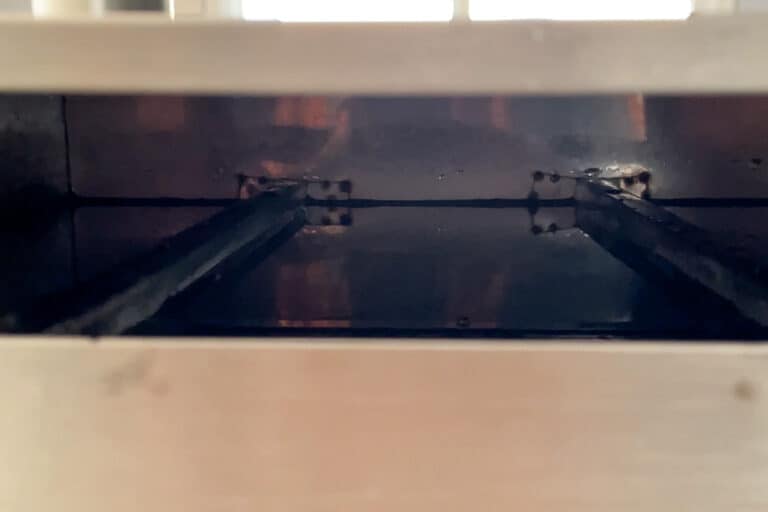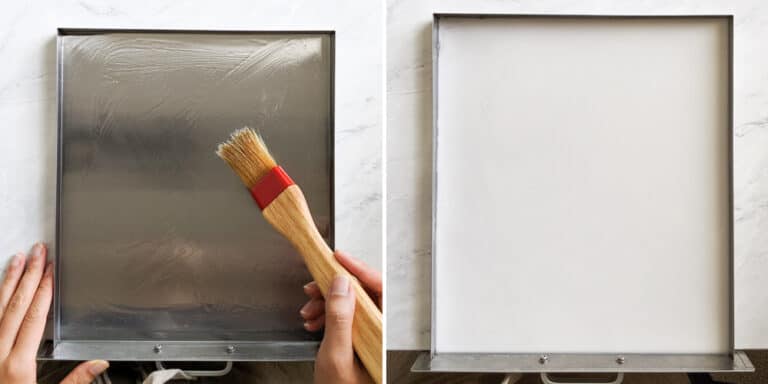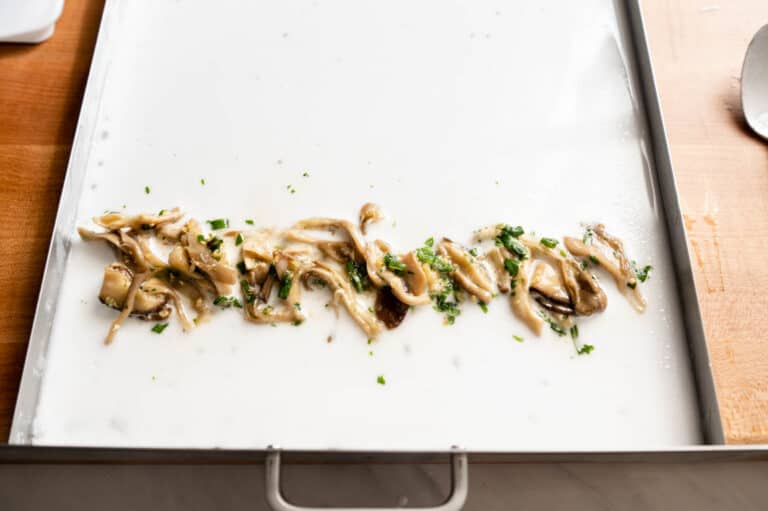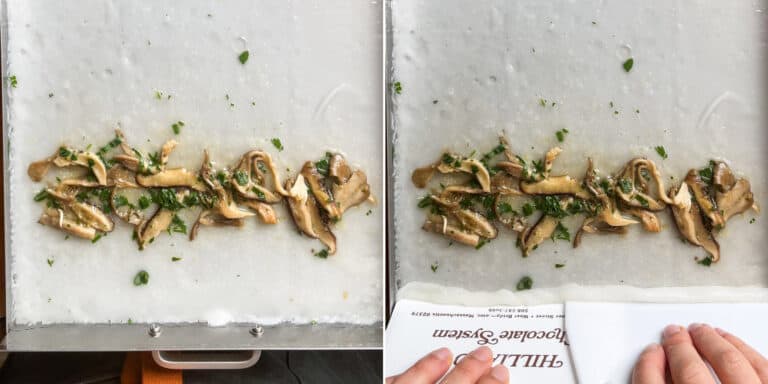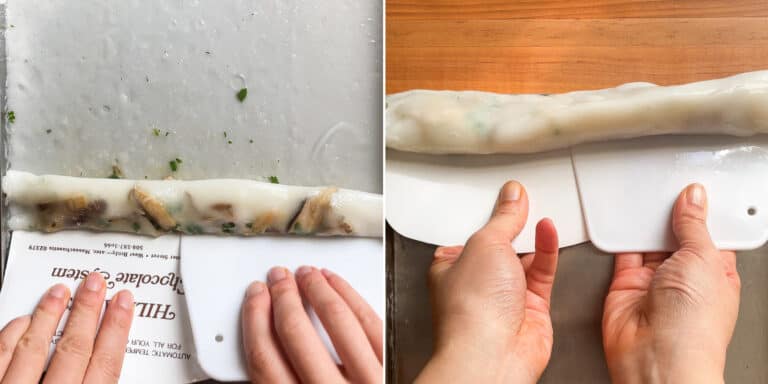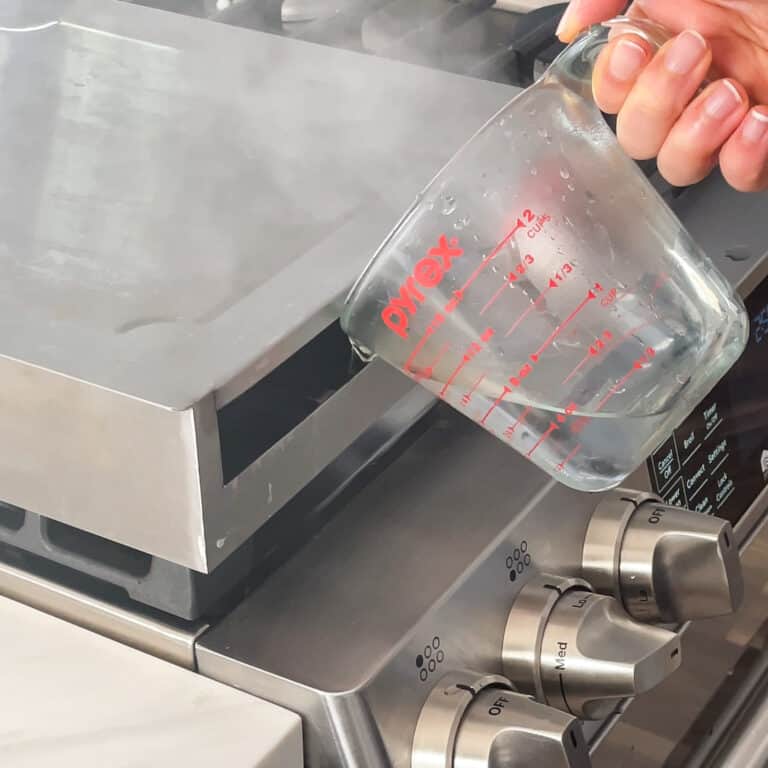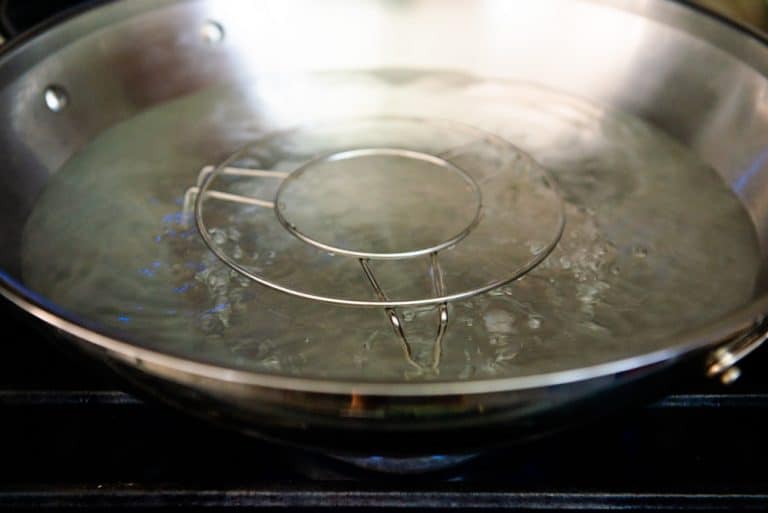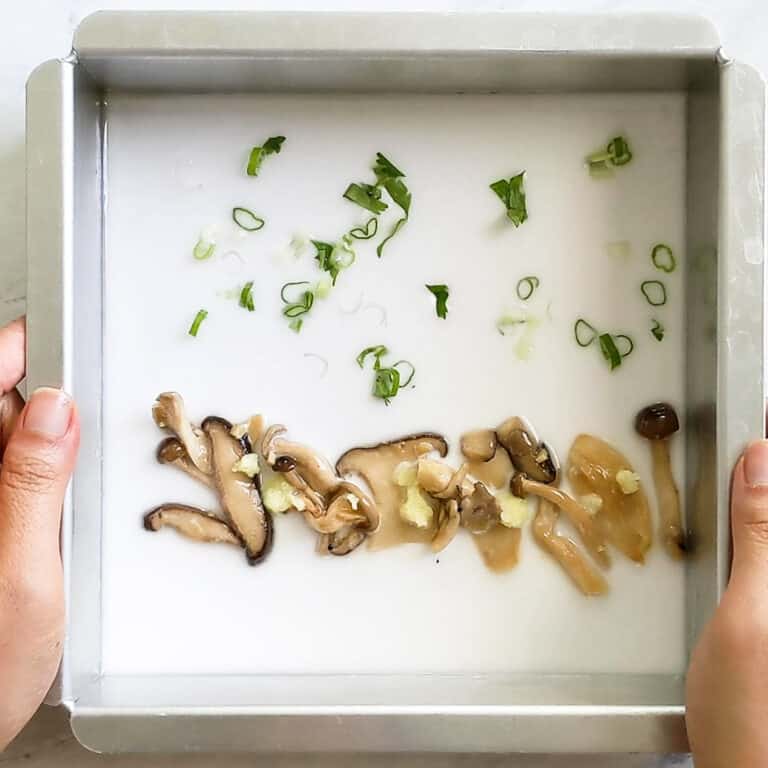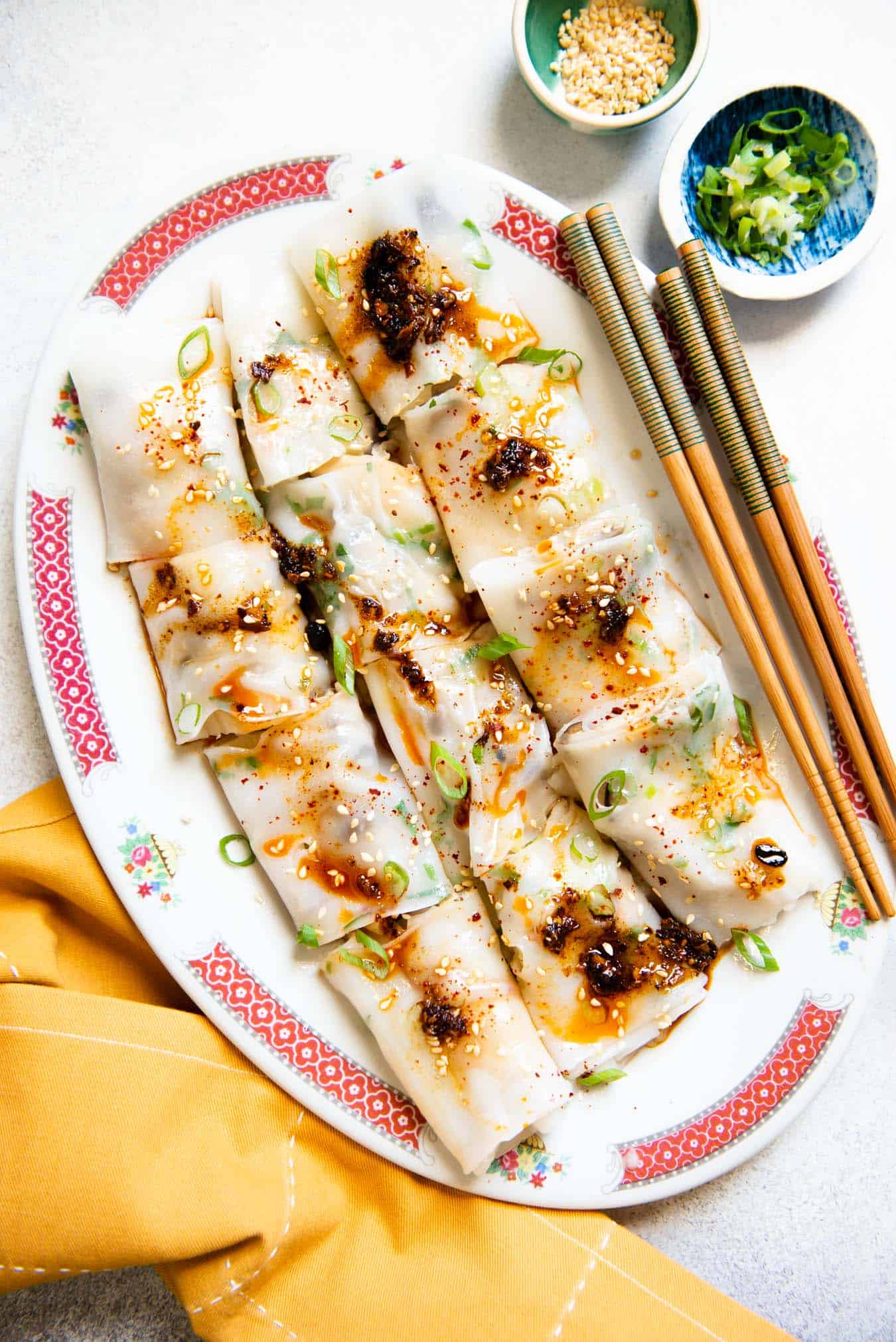LANGUAGE NOTE ON 腸粉
In Chinese, rice noodle rolls are written as 腸粉 (traditional characters) or 肠粉 (simplified characters). “Cheung fun” comes from the Cantonese pronunciation. In Mandarin, 腸粉 is pronounced as chang fen and chyoong foon in the Toisan dialect.
HOW TO MAKE MUSHROOM CHEUNG FUN
STIR FRY THE MUSHROOMS
You can use any kind of mushrooms for this recipe, but I recommend using several varieties to give the filling different textures and flavors. In my original recipe, I used a combination of king trumpet, oyster, and shimeji mushrooms. Recently, I made a version with shiitake, maitake, and oyster mushrooms. Both of them were delicious! Sauté the mushrooms for a few minutes. This deepens their flavor and it cooks down the mushrooms so that they don’t shrink too much as you steam the rice noodles. Once cooked, toss them with teriyaki sauce, garlic, ginger, scallions, and cilantro. You don’t want to skip the teriyaki sauce because the cheung fun will be too bland otherwise. Then, let the mushrooms cool while you prepare the batter.
MAKE THE BATTER
The batter for the rice noodle sheets is very similar to the one I used for my cheung fun recipe. In that recipe, I used a mixture of rice flour, potato starch, cornstarch, and tapioca starch. Here, I only use 3 types of flour: rice flour, potato starch, and tapioca starch. To make the batter, whisk the flours together and add 2 cups of room temperature water. Then, add 2 cups of boiling hot water. When adding hot water, pour a steady stream of it into the batter with one hand while stirring the batter with the other hand. You don’t want to add all the hot water at once as it may cause the flour to clump up. I like to place a silicone mat underneath the bowl to keep the bowl in place while I mix the batter.
PRE-MADE CHEUNG FUN BLENDS
If you don’t want to buy all the different flours for the recipe, you can often find cheung fun flour mixes at Asian supermarkets, like the one photographed above. Look for bags labeled “腸粉,” “肠粉,” or “bánh cuốn.” One important thing to note: I have found the flour to water ratios in the package directions to be a little off. In the cheung fun mix photographed above, the recipe calls for one part flour to two parts water. Mama Lin and I found the rice noodles were too stiff when following that recipe. Instead, we prefer a ratio of one part flour to three parts water. The flour-to-water ratio can vary across different brands.
CHEUNG FUN STEAMER BOX
I use a single-tier cheung fun steamer to steam these rice noodle rolls. The steamer is a stainless steel box with one or two slots for sliding in the steamer tray. My single-tiered steamer came with two trays. If you look at the photo of the steamer box above, you’ll notice that the steamer tray has a metal handle. This handle turns very hot during the steaming process. Make sure to use oven mitts or a thick towel when handling the tray. I accidentally touched a handle with my bare fingertips and it was a painful learning experience (I’m fine now).
SETTING UP STEAMER
Fill the box with about 1 to 1 ½ inches of water. My steamer box (photographed above) has 2 steel rods that run across the box to support the steamer tray. I try to fill the box with enough water so that the water line is just below those rods. Slide one of the steamer drawers into the slot and carefully transfer the steamer box to the stove. Set the steamer box directly above the grate on your stove and bring the water to boil on high heat. Once this water boils, reduce the heat slightly to medium high. There will be enough steam inside the box to cook the rice noodle batter on the steamer drawer. Make sure you always have a lot of boiling water inside the steamer box. Using a measuring cup with a spout (like a Pyrex cup), refill the box with water halfway through the cheung fun making process. I’ve burned the bottom of my box because I didn’t have enough water inside.
PREPARE THE CHEUNG FUN
Brush a thin layer of oil on a steamer tray. This keeps the rice noodle sheets from sticking to the bottom. Note that you need to brush oil before every batch. Then, pour about 1/2 cup to 2/3 cup of batter over the tray. With the first few cheung fun, you’ll notice that the batter is very slippery on the greased surface and it might be difficult to fill the bottom of the tray with batter. That is normal. It gets easier after several batches. Use the back of a spoon to spread the batter over the empty spaces. If you want a thinner sheet of rice noodle, pour 1/2 cup (or slightly less) batter over the tray. It’s trickier to fill the entire surface of the tray evenly with less batter, but it is possible. After you pour the batter into the tray, lay the mushroom mixture about 1/3 of the way up from the bottom edge. In a previous version of the recipe, I kept the mushrooms separate from the scallions and cilantro. I decided to simplify the process by mixing the scallions and cilantro with the mushrooms beforehand. You should only add the batter to the tray right before you steam the noodle sheet. In other words, don’t prepare a tray with batter and let it sit for a long time. The flours will sink to the bottom of the tray over time, resulting in unevenly cooked rice noodle sheets.
STEAM THE CHEUNG FUN
The cheung fun needs only 2 minutes of steaming. When you slide out the steaming tray, you’ll see a lot of air pockets on the rice noodle sheet that deflate quickly (see photo above). That’s an indication that the noodles are done.
ROLL THE CHEUNG FUN
Let the rice noodle sheet cool for a few minutes before you start rolling. The cooling process is important because it allows the noodle sheet to set before you roll it. If the noodle sheet is piping hot when you roll it, the texture will be very gooey and difficult to roll. The steamer set usually comes with a firm plastic bench scraper for rolling. Because of the large surface area of the trays, I usually use two scrapers. Carefully separate the rice noodle sheet from the bottom edge to start rolling. As you roll up the cheung fun, the noodle sheet under the mushrooms may tear easily. Don’t worry because when you roll the cheung fun all the way to the end, all the tears will be covered up. I typically roll the noodle sheets from the bottom up, which is why the mushrooms are placed 1/3 of the way above the bottom edge. Mama Lin, however, does the exact opposite. She prefers rolling the cheung fun from top to bottom, so she lays the filling 1/3 of the way down from the top edge. Either method works–it’s just a matter of working out what is more natural for you.
ALTERNATIVE CHEUNG FUN STEAMING METHOD
You do not need a cheung fun steamer to make this recipe. You can use several square baking pans. I made the mushroom cheung fun successfully with a 8×8-inch square baking pan, though a 9×9-inch pan will work as well. Grease the pan, fill it with 1/3 cup of batter (possibly more for a 9×9 pan), and add the filling. The steaming setup requires a wok and a steaming rack with 2 to 2.5-inch legs similar to these (affiliate link). I purchased mine from Asian grocery stores. Place a steaming rack in the center of a large wok. Fill the wok with water, enough so that the water level is just below the steamer rack. Bring the water to boil. Then, place the 8×8 pan with batter over the steaming rack and cover the wok with a lid. The cheung fun will cook in about 2 minutes. I prefer using a wide wok like this 14-inch stainless steel one (affiliate link) because it is easier to insert and remove the 8×8 pan without burning my hand. Buffalo brand woks are pricey but sturdy. Here’s a less expensive stainless steel wok (affiliate link).
CLEANING STEAMER TRAYS
Clean the steamer trays carefully. Because the trays are made of a thin layer of stainless steel, you can bend and warp the bottom of it if you apply too much pressure as you clean it. Mama Lin suggests setting the steamer tray over the counter with the lip hanging over the edge. That way, when you press down on the tray to scrub it, you won’t run the risk of bending it. There are always stubborn bits of rice noodle that get stuck in the corners of the steaming trays. I recommend using looped bottle brush cleaners (like the one in this set) to clean the corners (affiliate link).
SERVING CHEUNG FUN
Typically, cheung fun is served in a pool of sweet soy sauce made with water, sugar, and soy sauce. I also love serving cheung fun with a mixture of my teriyaki sauce, soy sauce, and my homemade chili oil. Feel free to serve this with any sauce you prefer.
TROUBLESHOOTING: WHY DID MY NOODLE SHEET CRACK?
If you see cracks in the noodle sheet, it’s usually an indication that there wasn’t enough steam in the steamer box to cool the rice noodle. There can be several reasons why there wasn’t enough steam:
There wasn’t enough water in the steamer boxThe heat wasn’t high enough to keep the water at a high simmer, which means less steam in the boxYou let the batter sit on the tray for too long before transferring to the steamer box to steam
Make sure to replenish the water after you make several cheung fun. Note that cracking is not the end of the world. The noodle sheet can be pliable enough to roll into a cheung fun. If it isn’t pliable, try steaming it again on high heat for another minute or 2. If the noodle sheet is still very cracked, toss the noodle sheet and make a new one. Note: This post was originally published in September 2019. I’ve updated the post with more photos and simplified the process for the filling.



![]()

